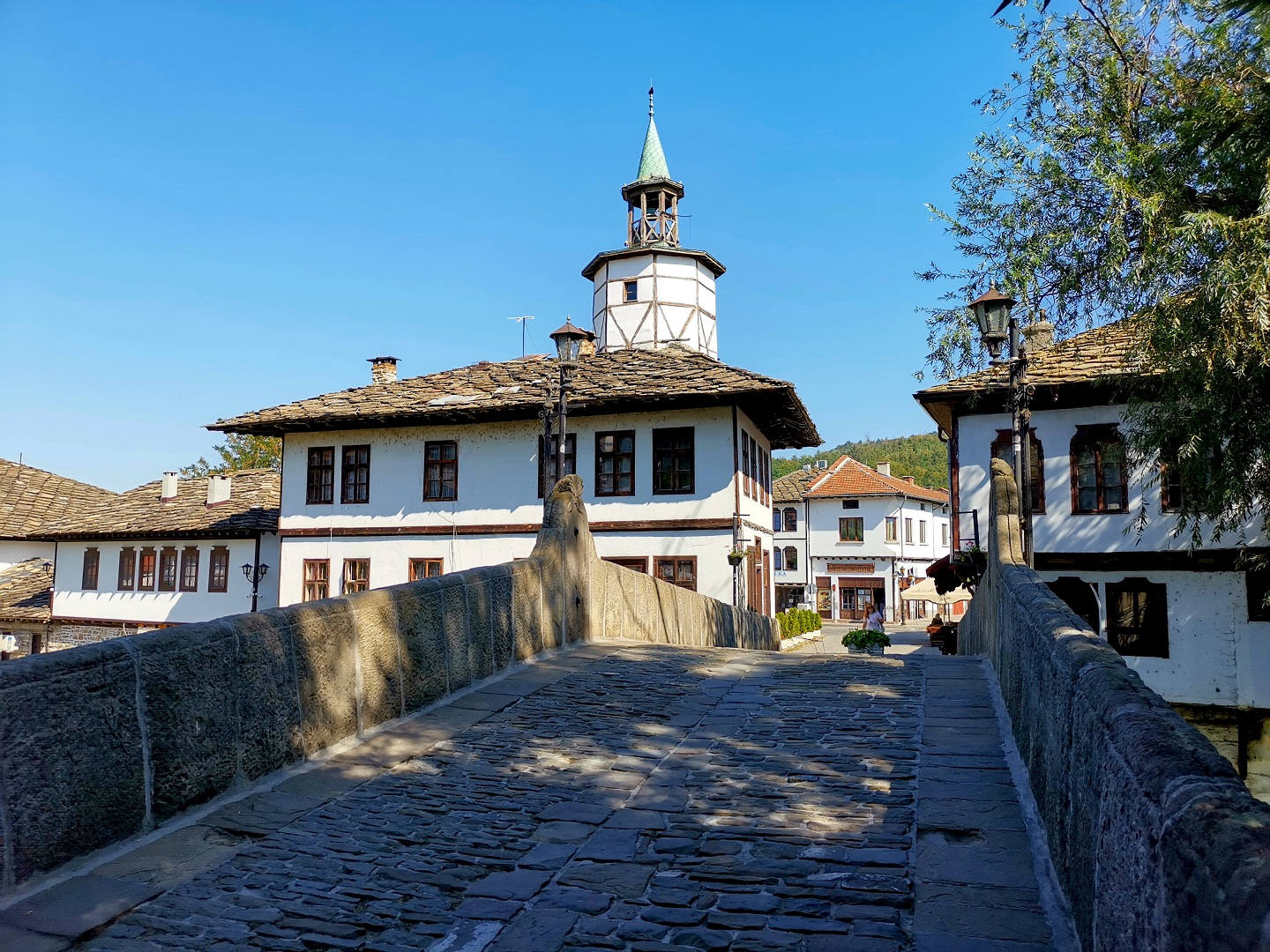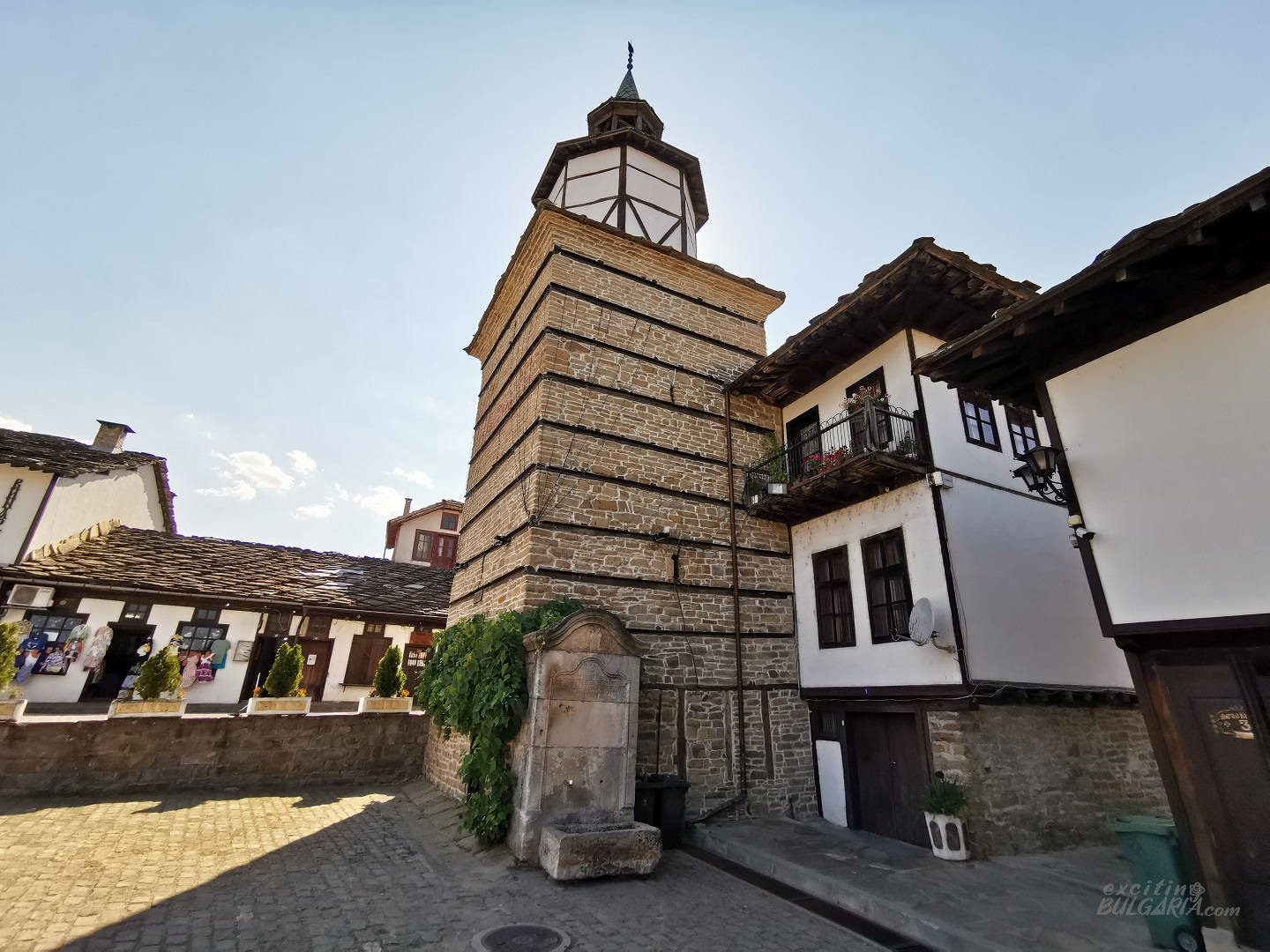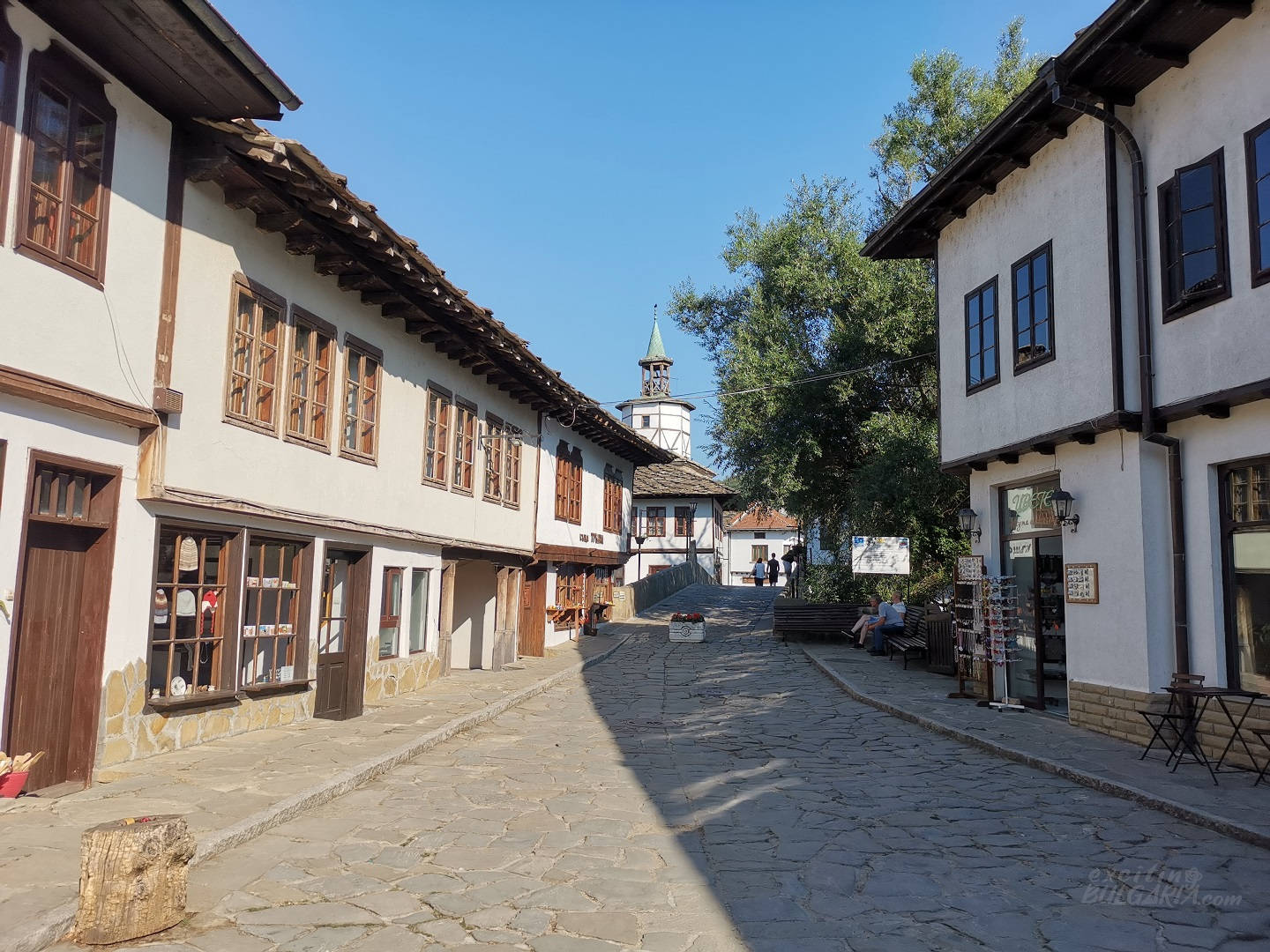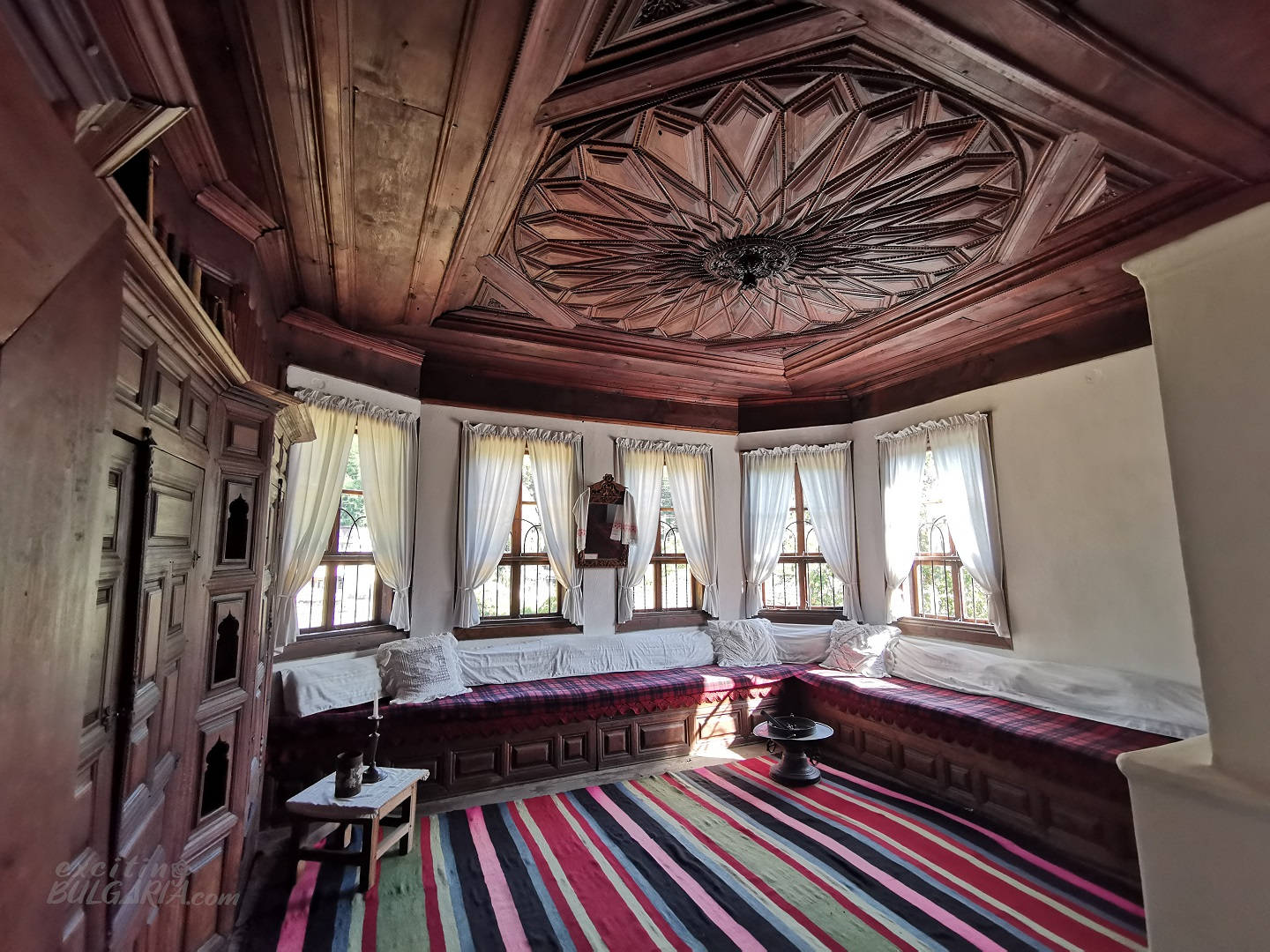Last updated on 28 October 2023
With its cozy cobblestone streets and charming houses with wooden bow-windows, Tryavna is one of the most beautiful towns in Bulgaria. It’s a gem of Bulgarian Revival architecture and an excellent place for relaxing walks.

Tryavna, located on the northern slopes of the Balkan Mountains, has been a center of woodcarving, icon painting and other crafts for centuries. In the 1800’s, it also became one of the leading cultural hubs of the country. The town played an important role in the liberation of Bulgaria. It was among the settlements that joined the later viciously suppressed April Uprising of 1876. Even national hero Vasil Levski visited the town several times to organize revolutionary activities. Another revolutionary and Levski’s ally, Angel Kanchev, was born in Tryavna. Today, Tryavna has around 10 000 residents and is a popular tourist destination with modern hotels, nice guest houses and many restaurants.
What to see in Tryavna
The lovely town center features the only well-preserved square of the Revival period in Bulgaria. Surrounded by remarkable buildings, Captain Dyado Nikola Square has a truly unique atmosphere. One of the main attractions of Tryavna, the clock tower, is located here.

The symbol of the town was built in 1814. In those times local women had a traditional jewelry, the sukay, that the Ottoman rulers didn’t like. Made of tin, silver and gold, those were rather heavy headdresses. It is said that in order for the construction to be allowed, local women had to stop wearing the sukay. At 10 pm every day, visitors can listen to the last bell rings of the evening, followed by a song based on Pencho Slaveykov’s poem “Inseparable”.

Apart from the clock tower, the most impressive building on the square is Tryavna Old School, also known as Slaveykov School. It was one of the first secular schools in Bulgaria, opened in 1939. The great Bulgarian poet and writer, Petko R. Slaveykov, who was born in Tryavna, taught here for 8 years and founded the town library in 1847. Enclosing a small courtyard, the plan of the building resembles the monastery complexes of its time. The Old School now functions as a museum that hosts cultural events and guest exhibitions as well. In one of the restored classrooms, everyone can experience what it was like being a student here in the 19th century.

The medieval Church of St. Archangel Michael is also situated at the square, its interior showcases masterpieces of woodcarving.

Kivgiren Bridge connects the square with the other bank of the Tryavna river. The 25-m-long stone bridge is another landmark of the town. Initially, it was made of wood but was rebuilt to withstand damages caused by the river after torrential rains. One of the slabs on the bridge has a jug carving on it. Some say that it used to be a sign for people coming from Gabrovo to wash their hands while others claim the opposite, that Tryavna residents had to wash before going to Gabrovo.

Continuing across the old bridge takes you to the street of crafts (Slaveykov Street) with various shops offering ceramic and linen products. You can also enjoy a traditionally brewed coffee here: it is made using a heated pan filled with sand.
One of the most impressive houses in Tryavna is Daskalov’s House which now accommodates Bulgaria’s only museum of woodcarving, a must-see when you’re visiting the town. Built between 1804 and 1808 for Hadji Hristo Daskalov, a wealthy merchant of rose oil and silk, it is one of Tryavna’s National Revival homes. The house is designed symmetrically. It’s commercial premises are located in the stone basement; the floor above is made up of two living areas linked together by a big balcony in front of them.

The most remarkable elements in the interior are the magnificent carved ceilings in the two living rooms upstairs, both depicting the sun. These true masterpieces of Bulgarian woodcarving are the work of two masters Dimitar Oshanetsa and Ivan Bochukovetsa who decided to compete and made a bet on who will make a better carving. Spoiler alert: both are amazing.

The unique Museum of Asian and African Art in Tryavna is located on the riverside. Housed in the former town bath building, the exhibition contains items from Tibet, Nepal, India, China and many more places. In case you’re wondering why this museum is accommodated in Tryavna: the town has no relations to the Far East. The collection was gathered by sculptor Zlatko Paunov, a native of Tryavna, who decided to display it in his hometown.
There is a hiking trail connecting the town center of Tryavna with the picturesque village of Bozhentsi, one of the most valuable architectural and historical reserves in Bulgaria. It has 3 different routes, the duration of the hike is equally about 2 hours (one way) along each of them.
Location and transport
Tryavna (BG: Трявна) is located next to road Nº 552, 22 km east of Gabrovo, 40 km south of Veliko Tarnovo and 225 km east of Sofia.
Tryavna has a direct railway connection with Veliko Tarnovo, Ruse and Stara Zagora. From Sofia it can be reached with one exchange either in Gorna Oryahovitsa or Dabovo, depending on the route.
Buses to Tryavna run regularly from Gabrovo, every half hour on weekdays and several times on weekends. There is also a direct bus line from Sofia once a day.